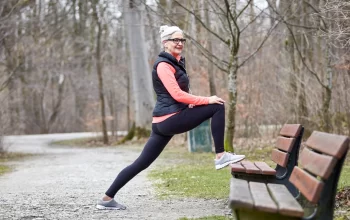While you may be in pain or experiencing symptoms of arthritis, you may not be sure how to find an arthritis center in your area. It is important to seek out medical attention for any symptoms you are experiencing. Fortunately, there are many places to go for care. Listed below are some of the most reputable and recommended clinics. Read on to learn more about each one. Depending on your condition, it may be beneficial to see multiple specialists for an evaluation.
UPMC Rheumatoid Arthritis Center – This medical facility has a multidisciplinary team of specialists with expertise in treating all types of rheumatic diseases, from inflammatory conditions such as lupus and gout to muscle and bone problems. These professionals work together to provide comprehensive care for patients affected by RA. It is important to consult with multiple medical specialists in order to get the best treatment possible.
Johns Hopkins Arthritis Center – This clinic was established in 1998, and has been ranked among the top 10 hospitals in the country since 2005. At the center, clinical care for patients with inflammatory arthritis is provided by thought leaders who have served on national and international committees. They also educate healthcare professionals and scientists about the latest advances in this field. There are many benefits of seeing an arthritis center, and one of them is that it will help you live a better life with arthritis.
RACER registry – The University of Pittsburgh Rheumatoid Arthritis Center is a part of a large research study supported by the National Institutes of Health (NIH) and Harvard University. The RACER registry collects longitudinal data from more than 4,000 clinic visits, which will facilitate patient enrollment in clinical trials and identify patients who are eligible for these studies. The center is led by Larry Moreland, MD, while Yong Hwang, MD, PhD, and Mandy McGeachy, PhD, serve as associate directors.
Aside from a comprehensive diagnosis, patients can also receive physical therapy. Physical exercise helps to reduce joint pain and improve muscle strength and endurance. Physical activity also helps a person lose weight, which reduces stress on painful joints and improves overall well-being. Aside from physical therapy, doctors may also prescribe range-of-motion exercises. These exercises are designed to maintain normal joint movement and reduce stiffness. Often, the pain patients experience is not only temporary, but can continue over a long period of time.
X-rays – An x-ray shows the bones in the joints, but it cannot show the cartilage, muscles, ligaments, and other tissues. Other, noninvasive imaging methods, such as an arthroscope, show the entire joint. A small, flexible tube, called an arthroscope, is used to transmit images from inside the joint to a video screen. In addition to imaging the entire joint, x-rays also allow doctors to determine the cause of rheumatic diseases.
Rachael Busch, M.D., NP – has been with the practice since the beginning. She obtained her Bachelor of Science degree from Hobart and William Smith Colleges in New York and her Doctor of Osteopathic Medicine from the New York Institute of Technology. Her training includes an internship at the Metropolitan Hospital and a residency at Norwalk Hospital, an affiliate of Yale University. She served as a medical resident and an instructor at Yale University. During her fellowship, Dr. Busch was awarded the Northeast Regional Fellow Award, which recognizes excellence in research.





